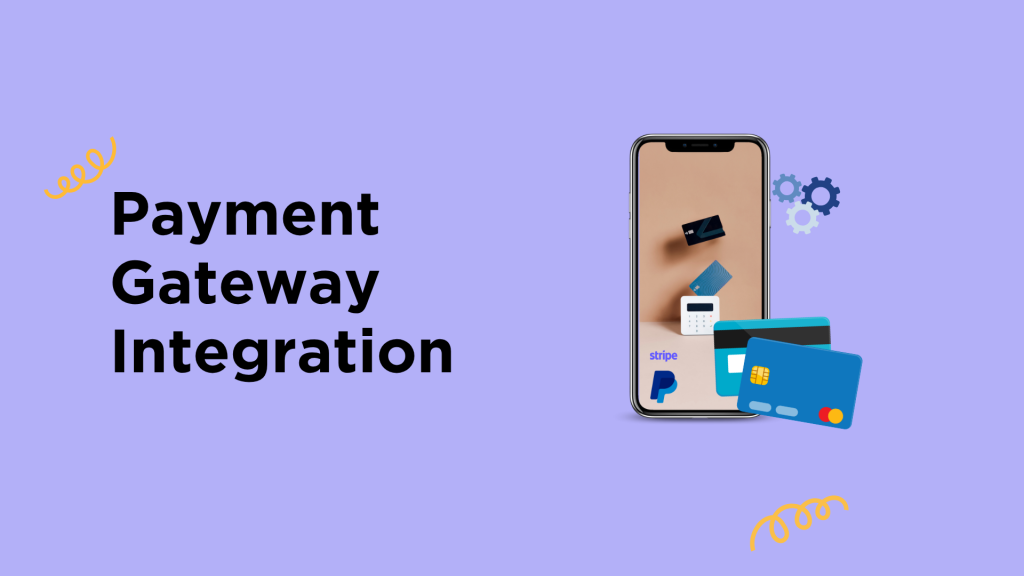Ecommerce websites hold a massive market for business and trading. Most websites have specific modules that help them run effectively. But ecommerce websites need some basic modules that are a must for achieving success.
For online-based businesses, there are a lot of ideas on how websites should be built and what features they should have. In this blog, we will list the best basic modules of ecommerce website.
Stick around to learn how to make your ecommerce website thrive with the help of some basic modules.
10 Must-Have Modules of an Ecommerce Website
An ecommerce website can make the entire business process easy and effective. But when building an ecommerce website, you have to know the basic modules of these kinds of websites.

Here is a brief about the ten basic modules of ecommerce website:
1. User Management Module
The user management module is one of the most important parts of an ecommerce website. It is an effective way to manage their accounts that enables them to access multiple resources and networks.
Simply put, user management includes the process of creating and managing a user’s account. This module also includes:
User Profile
User profile is a module where the user will provide his/her information as a user, and this part will contain information about their interest. This way, the owner will be able to understand his users and keep up with them.
Settings
The settings option is given so that users can build up their profile and browse the website as they like. It also includes terms and conditions, About Us information, and important company policies.
Terms and Conditions
Terms and conditions are such rules and regulations that users must know to safely browse the website. It helps the users to know how the website works and lets them have a safe browsing experience. Ultimately, it defines the relationship between the owner and consumer.
Permission to Analyze Users’ Profiles
Most websites need proper permissions before analysing their users’ profiles and devices. Some need to look at the user’s accounts and other things. The permissions will help the users to know = what the website is demanding from them and how they work.
If it feels unsafe to give permissions to the website, the user can just cancel it or avoid browsing. This is also a crucial module because it prevents risky browsing.
It’s also a crucial part for ecommerce websites as it manages the features and helps manage the website for the user. Moreover, this module provides access to the user’s data and lets them know what they can do with it.
2. Product Management
The product management system is an essential part of organizing and managing product data systematically. It also eases the tasks of pricing, inventory, and supply information. The benefits of this module are:
- Streamlined Management: It eases the process of organizing, updating, and retrieving products, and it also helps to add details like costs, prices, materials, and others.
- Improved Efficiency: Collaborating on different items, adding product information, marketing, and sales, is part of this product management.
Besides, product management modules make it easy to add new products and manage the existing ones according to their colour, size, etc. The owner can also add descriptive information, a clear image, specific technical information, and a user manual.
Additionally, this module helps the owner organize his products according to their categories and varieties. This way, the website looks more appealing, and it provides a clear concept to the users and visitors.
3. Shopping Cart
When shopping offline in the market, people use shopping bags and carts to carry their purchases. For online shopping, a shopping cart is a must on your ecommerce website. This basic module works as an online shopping bag when buying products.
The customers or visitors can add products to their shopping carts and remove them according to their choice. Moreover, they can adjust their products regarding the quality and choice.
You can add a secure payment process in this module. Ultimately, the customer will be able to have an overview of what they have bought and see the shopping costs.
4. Checkout Process
The checkout process is for the moment when the customer finalizes the purchase phase and moves to billing and confirming the purchases.
It’s the process of gathering information, processing transactions, and confirming orders. A user-friendly checkout process is crucial for maximizing the user experience. It also provides
- Mobile-friendly purchase
- Provides multiple payment options and
- Stronger security
5. Shipping and Delivery
Shipping is considered the backbone of ecommerce. Because the whole idea of ecommerce is to connect buyers and sellers worldwide and make the delivery process easy, whenever a customer selects some products from your website, they will check the shipping methods first.
They always search for fast, affordable, and fast shipping processes.
In the global market, new brands and companies are now launching their products worldwide using ecommerce sites. Your shopping experience and reputation mostly depend on your shipping process.
That’s why it is important to have a reliable and fast shipping method. Here are some mostly known and reliable ways of shipping and delivery:
6. Payment Gateway Integration

This payment gateway process is a must for an ecommerce business. It has no alternatives, and it will enrich the relationship between the consumer and provider.
A lot of banks and companies provide digital payment services with safe transaction security. But it’s wise to utilize fraud detection to reduce the possibility of any further casualties.
A safe and reliable payment gateway will carry various methods, like credit cards, e-wallets, or other payment methods. This provides the benefits of:
- Provides Security: Payment processes include strong security for the customers while paying for their products, and help them to have a pleasurable user experience.
- Simplifies the Process: The integration makes the payment process easy and helps the customer to pay quickly for their purchase.
- Reduces Fraud: The integration of payment methods includes fraud detection, which reduces the chances of fraud and gives a relaxing and reliable payment process.
- Gives Customers Confidence: When the website is providing a safe transaction and the customers are feeling safe, they start to like the particular store, and it also improves the chances of getting more and regular customers.
7. Analytics and Reporting
The analytics and reporting include a bunch of tools that identify, analyze, process, and present data on sales, web traffic, customer behaviour, and other basic performances.
It improves customer insights, provides decision-making data, and increases competitiveness. It also helps the owner to understand:
- Customer profiling
- Understanding customers’ choices
- Optimize business strategies
- Identify trends and opportunities, and others.
8. Customer Support
Customer support is a mandatory module for ecommerce websites. It allows multiple services to help the customer solve problems related to your business.
Moreover, it builds customer trust and loyalty, enhances shopping experiences, increases customer satisfaction, makes sales faster, is good for customer marketing, reduces return rates and complaints, etc.
9. Search and Filters
The search and navigation module is a crucial element for ecommerce websites. Because it helps the customers and visitors find what they need easily. There are several steps in organizing an ecommerce website for search and navigation modules.
Search Bar
An easy-to-find search bar is crucial for an ecommerce website. When you’re selling services or products of various types, you need to have a search bar on your website so that customers can find what they need easily.
It’s a great navigational feature that will make your website more attractive. Browsers like to find their needs easily, and a search bar will make the process comfortable.
Product Grouping
When you make a group for each of the similar products, the customers and visitors will quickly find what they’re looking for. Thus, the customer will have a good experience with your service, and it will have a positive impact on your business.
Filters
If you’re selling multiple kinds of products on your ecommerce website, you should add filters to your search bar. The users can find the specific products or services in this way.
It will simplify the process and make your website more appealing.
10. Reviews and Ratings
This is a specific module of an ecommerce website that is a must. Reviews and ratings help the website build its popularity, create social proof, and turn visitors into customers.

There are other benefits of this particular module:
- Increases sales and improves conversion rates
- Improves SEO
- Enrich the customers’ trust
- Enhance site credibility
- Provides insights and feedback
- Gives competitive advantages
It allows the owner to pinpoint the site’s weaknesses so that they can work on them.
Wrapping Up
The online market is growing bigger with time, and it is expanding the space for the connectivity of sellers and buyers. A perfect ecommerce website must have some basic modules on it.
These modules help it to organize the process of businesses and ensure that customers have their proper satisfaction from the store. Almost all the people of this modern world are now connected to the online market, and it is a crucial part of the world economy.
Frequently Asked Questions (FAQs)
Q. What are modules in an ecommerce website?
A. There are some basic modules of an ecommerce website that are a must. Those are:
Product information system (PIM), content management system (CMS), shopping cart, order management, payment module, admin module, etc.
Q. What is a web module?
A. Web module is a representation of a web application. These web modules are helpful in maintaining an ecommerce website.
Q. What is PIM?
A. PIM means payment management module, and it is the centre for the website where all the product data, descriptions, images, specifications, and variations are stored. This module allows the owner to add, edit, manage, and improve product information and provide accurate details.

